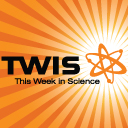Podcast: Play in new window | Download (Duration: 1:41:29 — 70.1MB)
What is in the This Week in Science Podcast?
COVID-19 Update, Magic Brain Decoder Ring, Antarctic Rainforest, Orchestral Squid in the Dark, Ant Traffic, Bacterial Photosynthesis, Fishy Calusa, Matchy Microbiomes, Nuclear Reprogramming 4Eva, Musical Creativity, Mantis Mimic, And Much More…
Support us on Patreon!
Want to watch this on YouTube? You can do that here.
Disclaimer, Disclaimer, Disclaimer!!!
With all of the efforts to contain the spread of the dreaded novel coronavirus
Humans have isolated themselves from regular human contact
They are taking on strange behaviors like
Frequent hand washing
Not touching everything
Working from home
Or not working from home
Day drinking
Spending time with family
Or spending time all alone
There are silver linings in this crisis…
For one, we may wind up saving lives
All of these efforts are in response to a single strain of virus
But what about all the other pathogens?
How will the common cold survive in a world of social distancing and hand washing?
How will std’s propagate without bars and clubs open?
Another is that we are technically still a part of the Paris accord
And we’ve got a great chance of meeting our reduction in greenhouse gasses this year.
And most importantly of all,
Despite all the changes that have taken place
There is one thing which remains the same.
This Week In Science,
Coming Up Next…
Let’s start with a COVID-19 UPDATES!
CASES:
The WHO COVID-19 Situation Report for March 31 reported 750,890 confirmed COVID-19 cases (57,610 new) and 36,405 deaths (3,301 new) globally. The US CDC reported 163,539 cases (22,635 new) and 2,860 deaths (455 new) on March 31.
How long do we need to keep up the social distancing measures?
It depends on how well our government responds, but we are looking at about 2 months to get past this first wave of infections.
How does it infect?
IT is a respiratory disease that infects via the ACE2 receptor using spike proteins on its surface to recognize and grab hold of cells, gaining entry. The most dominant infection route is through inhalation through the nose and airways where the cells with ACE2 receptors live. This is why food isn’t such a big concern – our digestive system has far fewer ACE2 receptors AND has caustic acids that destroy the virus.
Who does it infect?
It can infect anyone, but people with pre-existing health conditions like heart disease, COPD, diabetes, asthma, to name a few are more likely to become severely ill. This is also why the CDC is considering recommending that everyone wear masks when leaving the house. Young, healthy individuals who become infected are more likely to be asymptomatic and spread the disease without meaning to. Masks will reduce the potential transmission of the virus from infected individuals for a variety of reasons.
How did corona get here?
Bats, via pangolins. Most likely…
LET US KNOW WHAT QUESTIONS OR CONCERNS YOU HAVE, OR INFORM US ON ANY REGIONAL UPDATES, BY EMAILING KIRSTEN@THISWEEKINSCIENCE.COM.
Now for some other science news!
Magic Brain Decoder Ring
Researchers from UCSF published a study in Nature Neuroscience describing their success in creating a system for decoding neural signals into English sentences.
Antarctic Rainforest
90 million years ago the south pole was a rainforest.
HELP TWIS GROW! GET A FRIEND TO SUBSCRIBE TODAY!
Is it time for Blair’s Animal Corner???
How Squids Talk in the Dark
With very subtle, flashing light, all over their bodies of course!
When we are all driving to work again, ants might have an answer to those daily traffic jams.
You guessed it, it’s adjusting to the speed of the other drivers, not speeding up to slam on your brakes, Karen!
Support us on Patreon!
What has science done for you lately?
Write in to let us know what science has done for you lately. What does it do for you every day?
Leave us a message on our Facebook page – Facebook.com/ThisWeekinScience
OR email Dr. Kiki at kirsten@thisweekinscience.com
What science news does the second half of the show hold???
Bacterial Photosynthesis
Berkeley researchers have improved on their design using bacteria paired with conductive nanowires to recreate the process of photosynthesis. By packing bacteria more densly, they were able to achieve a record 3.6% conversion of CO2 into acetate, on par with some highly efficient plants.
Calusa culture was fishy
They had aquaculture thousands of years ago!
Fish microbiomes
They match around the world!
Nuclear Reprogramming 4Eva
Scientists erased hallmarks of aging in old human cells.
IF YOU ARE INTERESTED IN A TWIS SHIRT OR MUG OR OTHER ITEM OF TWIS MERCHANDISE, CLICK ON THE ZAZZLE LINK IN THE HEADER TO BROWSE OUR STORE.
Let’s finish strong with some quick stories!
Musical Creativity
Jazz musician’s brains have something to tell us about creativity.
Robot mimics mantis shrimp force
How interesting, that some of our greatest breakthroughs in robotics are simply being able to match the splendor of the animal world!



How can I download transcript episodes?
Our transcripts are produced through YouTube, so you can watch with subtitles there.